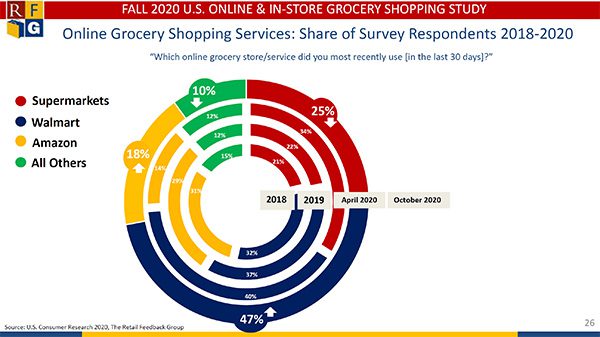This SWOT analysis of Walmart Inc. (formerly Wal-Mart Stores, Inc.) shows that the company’s leading position in the international retail industry is based on the utilization of organizational strengths and corresponding competitive advantages. These business advantages are used in countering the impacts of competing retailers and digital content distribution firms, such as Amazon, Target, Apple, and Google. In this case of Walmart, the SWOT analysis gives insights on the internal and external forces significant in the company’s strategy development in the retail industry. While these factors vary over time, the company’s growth depends on its ability to capitalize on its retail operational effectiveness and strengths. Also, in spite of the company’s weaknesses, its strengths are far more significant considerations. Walmart can use these strengths to exploit its opportunities in the retail market. The firm can also use its strengths to counteract the threats to its retail business, especially its e-commerce operations. Strategic implementations based on the SWOT factors are important in ensuring Walmart’s competitiveness and continued leadership as the biggest retailer in the world.
This SWOT analysis of Walmart shows that the company can have higher long-term success potential through aggressive global expansion, especially in retail markets in developing countries. The company’s internal strategic factors (strengths and weaknesses) represent capabilities for this kind of expansion. However, the firm’s external strategic factors (opportunities and threats) require the creation of more value through the retail service value chain, to overcome the hindering force of competitors, especially strong local and regional incumbents. These considerations are in line with the factors identified in the PESTEL/PESTLE analysis of Walmart Inc.
Walmart’s Strengths (Internal Forces)
The visit to the Museum was a great reminder of the company culture created by Sam Walton. His “Top 10 Rules for Business Success” continue to resonate today. Pleasantly surprised that Sam’s motivational ideas can still be found behind the scenes in Walmart stores. The rules for success were summarized in the employee breakroom. Walmart is one of the biggest retail environments in the world, with over 12,000 stores located in 28 countries. The giant also has a huge online presence. It is the world’s largest retailer, and many smaller companies are looking towards this global organization for tips on how they too can be so successful.
In this part of the SWOT analysis, Walmart’s strengths are all related to the size of its business. These competitive strengths enable the company to withstand threats despite its weaknesses as a low-cost retailer. For exploiting global expansion opportunities, Walmart’s strengths for further global growth are:
- Global organizational size
- Global supply chain
- High efficiency of supply chain

Sap Successfactors Walmart
Walmart’s global organizational size gives the business deep pockets to fund growth and expansion. The global supply chain also provides business resilience from market-specific risks, such as disruptions in local supply chains. In addition, Walmart’s supply chain has high efficiency because of advanced technologies for monitoring and controlling the movement of products from suppliers to its stores. In this SWOT analysis, such organizational and business strengths provide competitive advantage, especially against smaller retailers.

Walmart’s Weaknesses (Internal Forces)
Walmart’s weaknesses impose challenges on the firm’s ability to withstand the threats also identified in this SWOT analysis. These weaknesses are directly related to the company’s generic strategy and its implications in business development, capabilities, resources, and profit margins. Walmart uses the cost leadership generic strategy, which leads to the following weaknesses:
- Thin profit margins
- Easily copied business model
- Competitive disadvantage against high-end specialty sellers
Thin profit margins are a typical effect of using the cost leadership strategy. Because Walmart minimizes selling prices, it also needs to minimize profit margins and rely more on sales volume. The cost leadership strategy also makes Walmart’s business model easy to copy. The firm does not have significant competitive differentiators, except for its business size and prices. Furthermore, high-end specialty retailers have the upper hand in attracting quality-seeking buyers who have low sensitivity to price. Thus, the weaknesses presented in this SWOT analysis of Walmart reflect business vulnerability to innovative competitors and disruptions in the industry environment, especially in the presence of major e-commerce firms like Amazon.
Opportunities for Walmart (External Forces)
Walmart’s opportunities are mainly about expansion and improving business practices. These opportunities are linked to the global economic situation. Also, the human resources situation in the organization presents issues that are actually opportunities for the firm to improve. In this portion of the SWOT analysis, Walmart’s opportunities are:
- Expansion in developing countries
- Improvement in human resource practices to develop competitiveness in the labor market
- Improvement in quality standards
Walmart’s opportunity to expand in developing countries is based on their high-growth economic condition. On the other hand, the opportunities in HR practices directly relate to the criticisms on the company’s employment practices. Improving these practices can attract higher quality workers relative to other retailers. Walmart’s opportunity to improve quality standards addresses consumers’ concerns on the health effects of using low-cost and sometimes low-quality products. This part of the SWOT analysis presents some ways for addressing the company’s weaknesses and the threats to its retail business.
Threats Facing Walmart (External Forces)
Walmart Success Factors Survey
The threats to Walmart’s business are linked to the retail market condition and the changes in consumer perceptions about the products they buy. These factors should compel the company to make some competitive strategic changes. In the context of this SWOT analysis, the threats to Walmart are:
- Healthy lifestyle trend
- Aggressive competition
- Online retailers of various sizes
The healthy lifestyle trend is a threat and an opportunity. It threatens Walmart’s business because many of the company’s goods are perceived as not healthful, not organic or not natural. It is an opportunity for the company to improve its quality standards. However, this factor is more of a threat because the retail giant currently does not prioritize healthful products in its stores. Aggressive competition is another threat because other large retailers could use aggressive marketing strategies to capture Walmart’s customers. Also, small-scale and large online sellers are a threat against the company’s retail business. Through the Internet, small sellers or individuals are able to compete and bypass the company’s presence by using their own websites to sell products to online consumers. Similarly, in this part of the SWOT analysis of Walmart Inc., large online retailers have the ability to attract and satisfy consumers, especially those who prefer the convenience of online transactions.
Recommendations based on SWOT Analysis of Walmart Inc.
This SWOT analysis shows that Walmart must prioritize using its strengths to exploit opportunities in the global retail market. The company’s weaknesses and threats should be secondary priorities. Walmart can improve its HR management standards and product quality standards to improve firm performance. Also, the company must continue expanding its business to exploit economic opportunities in developing markets. Walmart’s strengths based on its global organizational size, global supply chain, and high efficiency of the supply chain can support aggressive global expansion in foreign markets. Still, the company must implement strategic changes based on the weaknesses and threats presented in this SWOT analysis, to prepare the business for the long-term developments of a globalized and increasingly online retail market.
Walmart Key Success Factors
References
- Bell, D. E., Lal, R., & Salmon, W. J. (n.d.). Globalization of Retailing. Harvard Business School.
- Brea-Solis, H., Casadesus-Masanell, R., & Grifell-Tatje, E. (2012). Business Model Evaluation: Quantifying Walmart’s Sources of Advantage. Harvard Business School.
- Helms, M. M., & Nixon, J. (2010). Exploring SWOT analysis–where are we now? A review of academic research from the last decade. Journal of Strategy and Management, 3(3), 215-251.
- Hicks, M. J., Keil, S. R., & Spector, L. C. (2012). Mom-and-Pops or Big Box Stores: Some Evidence of WalMart Impact on Retail Trade. Economic Development Quarterly, 26(4), 311-320.
- International Monetary Fund (2014). Emerging Markets Can Manage Evolving Mix of Global Investors.
- Matusitz, J., & Reyers, A. (2010). A Behemoth in India: Walmart and Glocalisation. South Asia Research, 30(3), 233-252.
- Piercy, N., & Giles, W. (1989). Making SWOT analysis work. Marketing Intelligence & Planning, 7(5/6), 5-7.
- Shabanova, L. B., Ismagilova, G. N., Salimov, L. N., & Akhmadeev, M. G. (2015). PEST-Analysis and SWOT-Analysis as the Most Important Tools to Strengthen the Competitive Advantages of Commercial Enterprises. Mediterranean Journal of Social Sciences, 6(3), 705.
- Sweden National Board of Trade (2012). E-commerce – new opportunities, new barriers. World Trade Organization.
- Valentin, E. K. (2001). SWOT analysis from a resource-based view. Journal of Marketing Theory and Practice, 9(2), 54-69.
- Walmart CEO Outlines Growth Strategy at Annual Meeting for the Investment Community.
- Walmart Inc. – Form 10-K.
- Walmart Inc. – Human Resources – Careers.
- Walmart Inc.’s E-commerce Website.